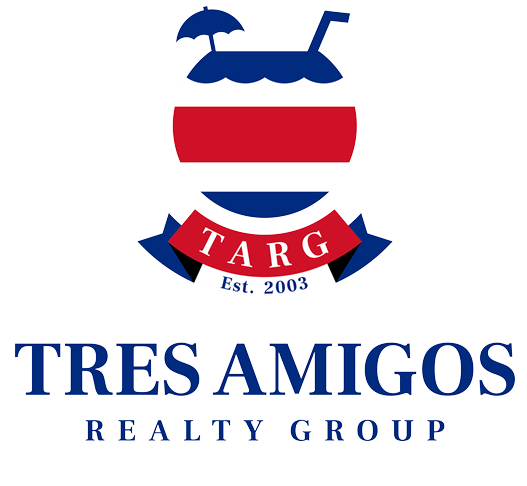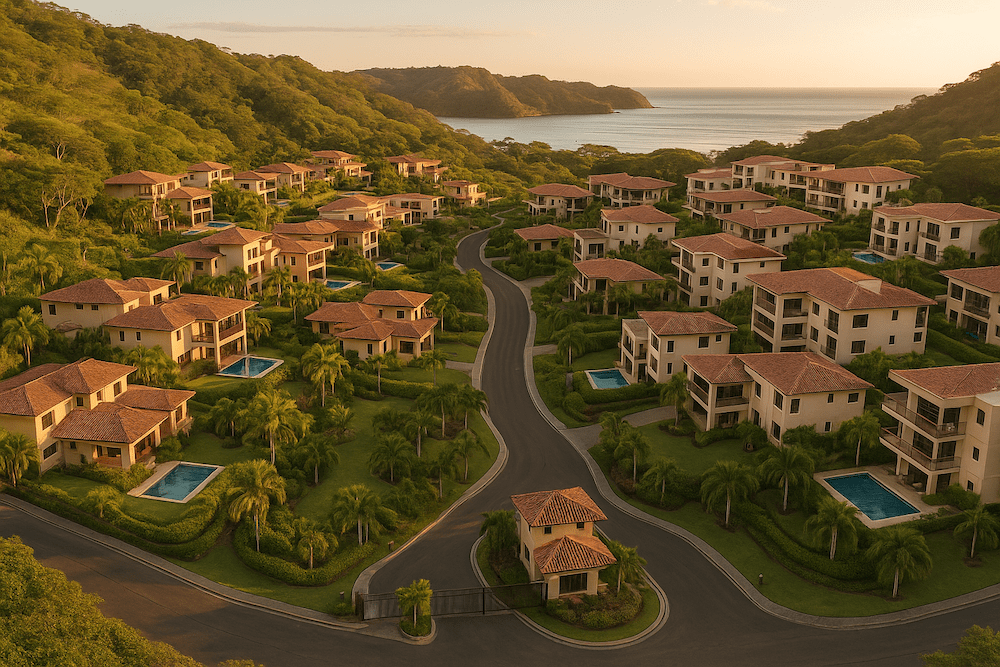Protect Yourself from “Estimated” HOA Fees in Costa Rica
The Hidden Risk of Estimated HOA Fees
Why HOA fees matter when buying property
When a buyer falls in love with a new ocean-view condo in Playa Hermosa or a sleek villa near Playas del Coco, the numbers on the page often look manageable. Purchase price, closing costs, and—tucked somewhere in the paperwork—monthly HOA fees. Those fees, seemingly minor, may be anything but, depending on how well the developer has estimated the final cost of the development. These fees determine how well a community is maintained, whether the pools sparkle year-round, how quickly security responds, and even the resale value of the property. Underestimating them, or trusting vague assurances from a developer, can create financial stress that lingers long after the excitement of the closing has worn off.
The role of “estimated” fees in new developments and pre-construction sales
In Costa Rica’s coastal regions, particularly Papagayo, buyers are often presented with HOA fees that carry a quiet disclaimer: “estimated.” Well-meaning developers of new projects, especially those in pre-construction, cannot lock in actual figures until the condominium regime is legally formed and owners take control. Until then, the numbers provided are projections and are sometimes aimed at making ownership look more attractive. The danger is simple: reality rarely aligns with these estimates, and when final budgets are calculated, owners can face sharp increases.
How HOA Fees Work in Costa Rica
The basics of condominium law (Ley 7933)
Costa Rica’s Condominium Property Law (Ley 7933 in Spanish) is the legal backbone of every HOA. It sets the rules for how communities are governed, how fees are determined, and the rights and obligations of property owners. Importantly, once a condominium regime is recorded, the HOA becomes a legal entity with authority to levy fees and enforce payment. No amount of developer marketing—or optimistic “estimates”—overrides this framework. The law ensures transparency, but it also means that fees must ultimately reflect actual costs of maintenance and operations, not preliminary promises.
Who decides HOA fees and when they become official
Official HOA fees are established at the first owners’ assembly, after the condominium regime is complete. Owners (not developers) vote on the budget, which is typically prepared by the appointed administrator. This budget must reflect real expenses—security contracts, landscaping, insurance, amenities upkeep—and is divided proportionally among unit owners according to their registered percentage (known as “coeficiente”). Until that moment, any number given is provisional.
Why developers often provide only estimates
Developers face a practical problem: they must market homes before communities exist. To do so, they draft preliminary budgets based on projected staffing, utility costs, and amenity maintenance. But variables abound. A nearly empty complex costs more per household to maintain than one with dozens of owners sharing expenses. Utility and water rates fluctuate. Amenities may expand mid-project. All of this makes “estimates” just that—educated guesses, not binding commitments.
How HOA Fees Play Out in Papagayo’s New Developments
 Why estimated fees sometimes appear in new projects
Why estimated fees sometimes appear in new projects
Papagayo is experiencing steady growth, from boutique condo projects in Playa Panama to larger gated communities near Playa Ocotal. With each groundbreaking, developers must provide potential buyers with some expectation of ongoing costs. An estimate of $250 a month may sound palatable, but buyers should remember that the figure is estimated and, in some cases, be designed to keep interest alive during the sales phase. It does not necessarily reflect what it will cost to run the community once the gates open and services begin.
How amenities and build-out stages influence actual costs
The more ambitious the amenities—clubhouses, gyms, landscaped trails, multiple pools—the higher the maintenance bill. In practice, the developer remains responsible for HOA fees on all unsold properties, and as sales progress, those obligations transfer to new owners. However, when the first owners’ assembly is convened, the fees are formally set, and if the developer still holds a majority of lots, they effectively control the vote. This allows them to influence the budget and fee levels, sometimes in ways that don’t fully align with the interests of early buyers. That’s why it’s essential for new owners to secure protections—through clear agreements or legal safeguards—so that fee structures remain fair and sustainable as the community evolves.
The natural progression from estimates to stable HOA budgets
Over time, most Papagayo developments reach a balance. As occupancy rises and boards become more experienced, budgets align with reality and fees stabilize. Well-managed HOAs often build reserve funds for long-term repairs, reducing the risk of sudden special assessments. The challenge lies in the gap between marketing-stage “estimates” and the lived reality of actual monthly obligations in the first years.
What Buyers Should Keep in Mind
How fees can adjust as communities mature
It’s common for HOA fees to increase after the first year or two. This isn’t necessarily a sign of mismanagement—it often reflects the true cost of running a new community. Buyers should budget with flexibility, expecting the possibility of a 20–30% increase from the initial figure. Planning for that cushion reduces unpleasant surprises.
Why transparent budgeting is more important than the initial number
A developer who provides detailed draft budgets, staffing plans, and cost breakdowns is far more trustworthy than one who simply lists a low monthly fee. Transparency signals realism. It also empowers buyers to ask smarter questions, identify potential cost gaps, and prepare accordingly. The “how” of the estimate matters as much as the number itself.
The long-term benefits of well-managed HOAs in Papagayo
Despite the early hurdles, strong HOAs are an asset. In Papagayo, communities with effective management and realistic fee structures retain their value and attract international buyers who want stability. Properly funded HOAs maintain curb appeal, enforce standards, and build a sense of trust among neighbors. Over time, the extra dollars spent each month can translate into stronger resale value and fewer headaches.
How to Protect Yourself Before You Buy
Ask for draft bylaws, budgets, and maintenance plans
Every serious buyer should request draft bylaws, preliminary budgets, and maintenance outlines before signing. Even if they are only provisional, these documents reveal the developer’s intentions and help you spot potential red flags—like an absence of reserve planning or underfunded security.
Negotiate developer obligations (subsidies or temporary protections)
Some developers agree to subsidize early HOA fees until a certain occupancy level is reached. Others may cap increases for the first year. These protections, while not universal, can soften the risk of buying early in a project. But they must be negotiated clearly and recorded in writing, not left to verbal assurances.
Be aware of voting dynamics at the first assembly
When the first owners’ assembly is held, HOA fees are formally set. If the developer still holds a majority of units, they may also control the majority of votes, giving them outsized influence over the budget and fee levels. This can tilt decisions in ways that don’t always favor early buyers. A well-advised purchaser will seek contractual protections that limit sudden fee hikes or ensure more balanced representation in the community’s governance during the early years.
Involve a local attorney to review documents and contracts
Costa Rica real estate law is nuanced, and condominium regulations are no exception. A trusted local attorney can review bylaws, verify compliance with Ley (law) 7933, and ensure that developer promises align with legal realities. This step is not optional—it is the most effective safeguard a buyer has against unwelcome surprises.
Smart Questions to Ask Developers
What services are included in the HOA fee?
Clarify whether the quoted amount covers essentials like water, security, and waste management, or if it applies only to common area upkeep. Ambiguity here often leads to hidden costs later.
How will fees evolve as more homes are built?
Ask how the budget adjusts as additional phases of the project are completed. A clear explanation of economies of scale—or lack thereof—will help you understand where costs might rise or fall.
What financial safeguards are in place if costs rise?
Well-structured HOAs include reserve funds or escalation clauses to handle unexpected expenses. A developer who has considered these contingencies is signaling long-term responsibility rather than short-term salesmanship.
Final Advice
Due Diligence and Peace of Mind
In Papagayo’s thriving real estate market, HOA fees are more than a line item—they are a defining factor in long-term ownership satisfaction. Estimated numbers may look appealing on glossy brochures, but Costa Rican law ensures that actual costs will prevail. Buyers who dig deeper, ask sharper questions, and work with experienced attorneys can navigate these uncertainties with confidence. Just as important, an experienced local real estate agent can provide context: knowing which developers have a track record of accurate HOA estimates, which projects have delivered quality amenities, and where transparency is the norm rather than the exception. With the right guidance, the reward is a home where financial clarity matches the beauty of the setting, allowing owners to enjoy their investment without unwelcome surprises.







